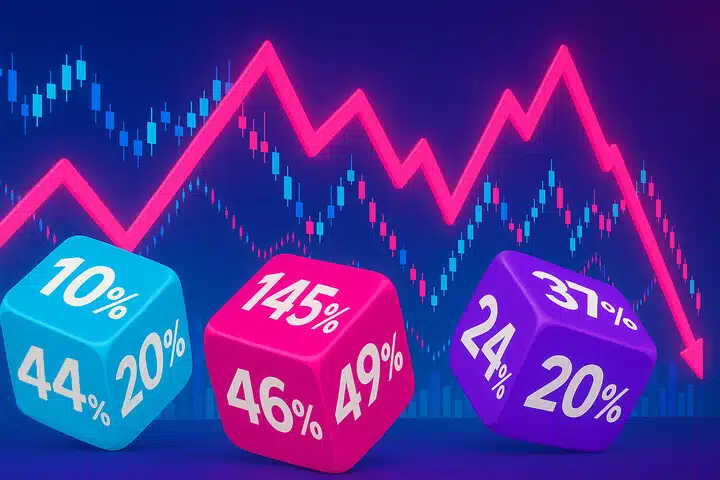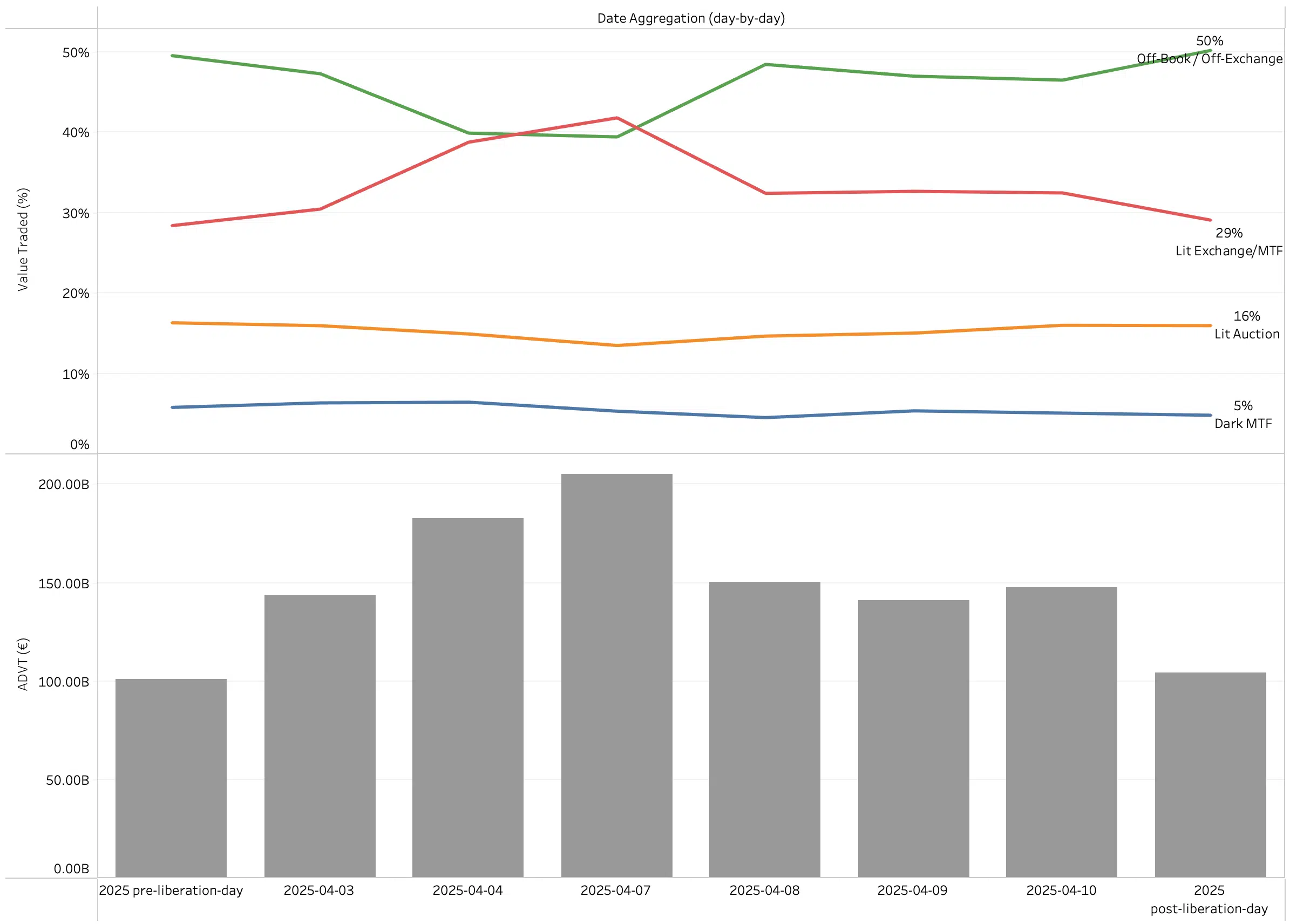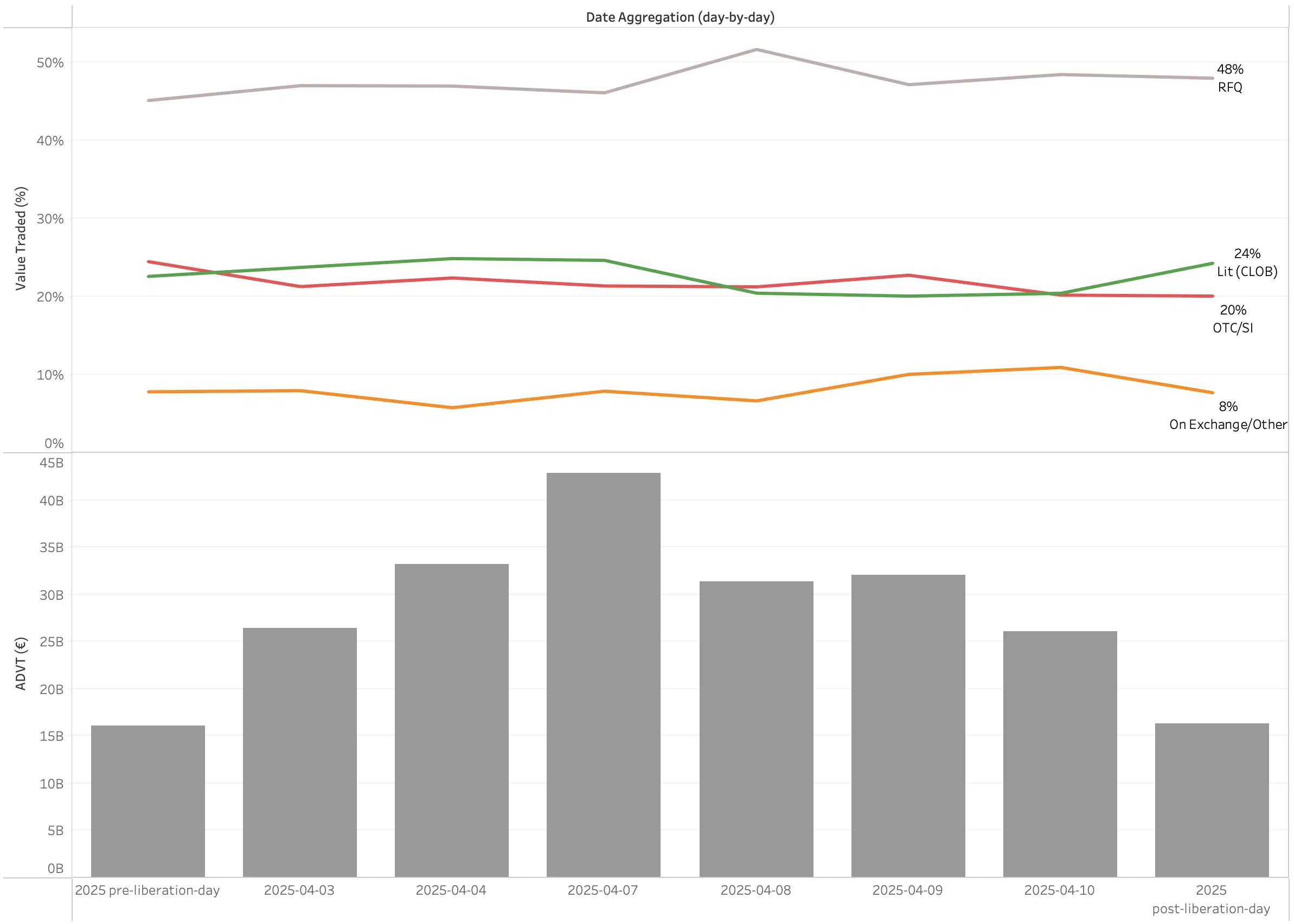
At big xyt, we specialise in delivering granular, actionable insights into trading activity across asset classes and execution mechanisms. Recent market turbulence around “Liberation Day” offered a textbook case to showcase how our analytics uncover meaningful shifts in market microstructure – and how quickly the market can revert to normality after stress events.
We examined market activity in European equities and ETFs before, during, and after the volatility spike on Monday, 7 April. The findings provide fascinating insights into trader behaviour, venue dynamics and execution choices during high-volume sessions.
Equities: A Temporary Reshaping of the Market
The equity markets saw a sharp surge in activity, with average daily traded volumes (ADVT) doubling from 101 billion EUR to 205 billion EUR on the Monday following Liberation Day.
This spike had an immediate impact on market structure:
- CLOBs (Central Limit Order Books) gained significant traction, increasing their market share from 28% to 42%. This jump suggests that in times of high volatility and urgency, participants gravitate toward transparent, real-time execution venues.
- Auctions saw a drop in market share from 16% to 13%, likely due to the mismatch in timing and immediacy relative to intraday volatility.
- Off-book and off-exchange volumes also declined, indicating a preference for lit, on-exchange execution.
- Interestingly, dark trading remained steady, fluctuating between 5% and 6%, showing that while some strategies remain consistent, others adjust dynamically to market conditions.
Key takeaway: The market structure flexed in response to volatility, but quickly reverted to pre-event norms once conditions stabilised – a testament to the resilience and adaptability of equity market infrastructure.
ETFs: Stability Amid Surging Volumes
ETFs experienced an even more dramatic relative surge in activity, with ADVT jumping from 16 billion EUR to 43 billion EUR – nearly tripling in one day. Yet, despite the jump, market structure changes were far more muted compared to equities.
- CLOBs ticked up modestly from 23% to 25% market share, with the upward trend continuing to 26% in the days after – noteworthy in the context of a 12-month pattern of steady growth in CLOB adoption for ETF trading.
- RFQ (Request-for-Quote) trading remained dominant, rising slightly from 45% to 46%.
- OTC and SI mechanisms saw a minor dip, suggesting some rerouting of flow to more transparent or accessible venues.
Key takeaway: The ETF market structure remained remarkably stable, demonstrating a robust framework for absorbing volume shocks without major structural dislocations. The continued climb in CLOB usage reflects broader shifts in trader preferences and infrastructure development.
Final Thoughts: Real-time Intelligence in Action
These patterns are not just interesting – they’re instructive. They highlight how execution behaviours shift in response to volatility, and how infrastructure choices (lit vs. dark, RFQ vs. CLOB) reflect trader needs for immediacy, transparency or discretion.
big xyt’s Trading Analytics platform empowers participants to monitor these shifts in real time, optimise strategies and anticipate emerging trends. The Liberation Day event offered a valuable opportunity to validate our approach – and reaffirm the need for data-driven decision-making in today’s complex market ecosystem.
To learn how you can stay ahead with intelligent insights into trading behaviour, get in touch with our team.




